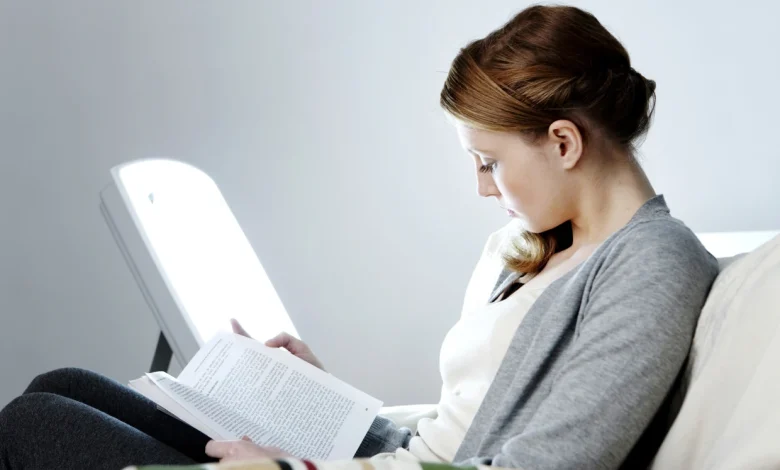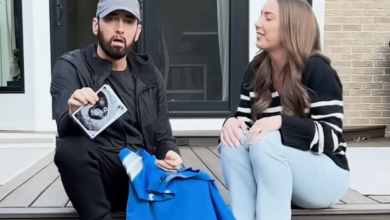Winter Depression Relief: How Light Therapy Can Make a Difference

As the days grow shorter and the air colder, many people experience noticeable shifts in their mood, energy levels, and overall sense of well-being. For some, these seasonal changes go beyond the typical “winter blues” and develop into a condition known as Seasonal Affective Disorder (SAD)—a form of depression triggered by reduced daylight during the colder months. Characterized by persistent sadness, fatigue, lack of motivation, changes in sleep patterns, and increased cravings for carbohydrates, SAD affects millions worldwide.
Fortunately, science has shown that light therapy—a treatment involving exposure to artificial light that mimics natural sunlight—can provide significant relief. In fact, it is one of the most widely recommended treatments for winter depression and has proven effectiveness for many individuals struggling during the darker months.
The science behind light therapy, how it helps with winter depression, its benefits, risks, practical tips for using it, and how it compares to other treatment options.
Understanding Winter Depression (Seasonal Affective Disorder)
Before exploring light therapy, it’s essential to understand what winter depression entails. Seasonal Affective Disorder is a recurrent depressive disorder that typically begins in late fall and lasts until early spring.
Common Symptoms of SAD
- Persistent low mood or sadness
- Fatigue and low energy despite adequate rest
- Oversleeping or difficulty waking up
- Loss of interest in usual activities
- Increased appetite, particularly for carbohydrates and sweets
- Difficulty concentrating
- Social withdrawal
Why Does SAD Happen?
The main culprit is believed to be reduced sunlight exposure. Shorter daylight hours in winter disrupt the body’s internal clock (circadian rhythm), reduce serotonin production (a neurotransmitter linked to happiness), and increase melatonin production (the hormone responsible for sleepiness). This biochemical imbalance contributes to depressive symptoms.
What Is Light Therapy?
Light therapy (phototherapy) is a non-invasive treatment that involves sitting near a specially designed light box that emits bright, artificial light—typically at 10,000 lux—to mimic natural outdoor light.
During a session, the individual sits close to the light source, usually within 16–24 inches, for about 20–45 minutes daily, especially in the morning. Unlike ordinary household lamps, light therapy boxes filter out harmful UV rays and provide a concentrated, safe brightness level to regulate mood-related brain chemicals.
How Light Therapy Works: The Science Behind It
The effectiveness of light therapy lies in its impact on the body’s biological rhythms and neurochemistry.
- Regulates Circadian Rhythm
The body’s internal clock is influenced by sunlight. In winter, reduced daylight causes the circadian rhythm to drift, leading to sleep disturbances and mood changes. Light therapy mimics the sunrise effect, resetting the biological clock and helping the body distinguish between day and night. - Boosts Serotonin Levels
Exposure to bright light stimulates the brain to produce more serotonin, the neurotransmitter associated with mood regulation and feelings of well-being. Low serotonin levels are closely linked to depression. - Controls Melatonin Production
Darkness triggers melatonin release, making people sleepy. With prolonged darkness during winter, melatonin levels remain higher, contributing to fatigue and lethargy. Light therapy reduces melatonin production in the morning, promoting wakefulness and alertness. - Improves Sleep-Wake Cycle
By synchronizing circadian rhythms, light therapy enhances the quality of sleep at night while boosting daytime energy levels.
Benefits of Light Therapy for Winter Depression
Light therapy is recognized as a first-line treatment for SAD by major health organizations, including the American Psychiatric Association and the National Institute of Mental Health.
Key Benefits
- Reduces depressive symptoms: Many people experience significant mood improvement within 1–2 weeks.
- Increases energy levels: Restores motivation and combats fatigue.
- Improves sleep quality: Helps reset the sleep cycle for better rest.
- Non-invasive treatment: No medication required, making it safe for many individuals.
- Few side effects: Well-tolerated by most users compared to antidepressants.
- Convenient and at-home option: Light therapy lamps are widely available for personal use.
How to Use Light Therapy Effectively
For best results, it’s important to use light therapy correctly.
1. Choose the Right Light Box
- Brightness: 10,000 lux is standard for effective treatment.
- UV Filter: Must block harmful UV rays.
- Size and Positioning: A larger light box allows more comfortable positioning during use.
2. Timing Is Crucial
- Morning sessions are most effective, ideally soon after waking up.
- Evening sessions may interfere with sleep by shifting the circadian rhythm.
3. Session Duration
- Typical sessions last 20–30 minutes daily at 10,000 lux.
- If using lower lux (e.g., 2,500), longer sessions may be required (1–2 hours).
4. Proper Positioning
- Place the lamp at a 30–45 degree angle to your face, about 16–24 inches away.
- Do not stare directly into the light; instead, keep it within your peripheral vision while reading, eating breakfast, or working.
5. Consistency Matters
- Use daily during fall and winter months until natural daylight increases.
- Many people stop therapy in spring when symptoms subside.
Possible Side Effects and Safety Considerations
While generally safe, light therapy may cause mild side effects in some individuals, including:
- Headaches
- Eye strain or irritation
- Nausea
- Agitation or restlessness
- Insomnia (if used too late in the day)
Who Should Be Cautious?
- People with bipolar disorder (light therapy may trigger mania if not monitored).
- Individuals with eye conditions like macular degeneration or glaucoma should consult an eye doctor first.
- Those taking medications that increase light sensitivity (such as certain antibiotics or psychiatric drugs).
Always consult a healthcare provider before starting light therapy, especially if you have existing health conditions.
Light Therapy vs. Other Treatments for Winter Depression
While light therapy is highly effective, it’s not the only option for managing SAD. Many people benefit from combining treatments.
1. Medication (Antidepressants)
- SSRIs (Selective Serotonin Reuptake Inhibitors) like fluoxetine are sometimes prescribed.
- Can be effective but may cause side effects such as weight gain, nausea, or sexual dysfunction.
2. Psychotherapy (Cognitive Behavioral Therapy for SAD – CBT-SAD)
- Focuses on reframing negative thoughts and building coping strategies.
- Evidence suggests CBT-SAD can provide long-term benefits that last beyond the winter season.
3. Lifestyle Modifications
- Spending more time outdoors, even in cloudy weather.
- Regular physical exercise to boost mood.
- Maintaining a balanced diet rich in omega-3 fatty acids, whole grains, and lean proteins.
- Practicing mindfulness and stress reduction techniques.
4. Vitamin D Supplements
- Many people with SAD have low vitamin D levels due to limited sunlight exposure.
- Supplementation may help, though research results are mixed.
Light therapy can be used alone or combined with these approaches for maximum effectiveness.
Research Evidence Supporting Light Therapy
Numerous studies confirm the effectiveness of light therapy for winter depression:
- A landmark study published in the journal Archives of General Psychiatry found that daily exposure to bright light significantly reduced SAD symptoms in 60–80% of participants.
- According to the National Institute for Health and Care Excellence (NICE), light therapy shows rapid improvement, often within one to two weeks.
- A 2016 meta-analysis reviewing 20 randomized controlled trials concluded that light therapy is effective and well-tolerated, making it a reliable first-line treatment for SAD.
Practical Tips to Enhance Results
To maximize the benefits of light therapy:
- Start early: Begin sessions in the fall before symptoms intensify.
- Be consistent: Daily use is more effective than sporadic sessions.
- Pair with movement: Use the lamp while doing light morning exercises, stretching, or reading.
- Track progress: Keep a mood journal to evaluate improvements.
- Combine therapies: Consider integrating light therapy with CBT, healthy diet, and exercise.
Real-Life Experiences
Many individuals with SAD report life-changing benefits from light therapy:
- “Before I started using a light box, I dreaded winter. Now, within a week of daily sessions, I feel energized and motivated again.”
- “It’s like flipping a switch—I wake up, use my lamp for 30 minutes, and I feel like myself again.”
Such testimonials highlight how accessible and effective light therapy can be.
Looking Ahead: The Future of Light Therapy
Advances in technology are making light therapy even more convenient and personalized:
- Portable devices: Wearable light visors and smaller lamps are gaining popularity.
- Smart integration: Light boxes that simulate natural sunrise and connect with sleep apps.
- Tailored therapy: Future research may customize brightness and timing based on genetic and circadian profiles.
Conclusion
Winter depression, or Seasonal Affective Disorder, can significantly affect quality of life. The lack of sunlight during colder months disrupts biological rhythms and alters mood-related brain chemistry. Light therapy provides a safe, non-invasive, and scientifically proven method to restore balance.
By regulating circadian rhythms, boosting serotonin, and reducing melatonin, light therapy helps people feel more energized, focused, and emotionally stable throughout winter. While not a cure-all, it stands as one of the most effective first-line treatments for SAD, especially when combined with lifestyle strategies, therapy, and—in some cases—medication.
If you struggle with low mood and fatigue each winter, light therapy may be the key to reclaiming your energy and well-being. With consistent use and proper guidance, it can make a meaningful difference in how you experience the darker months.




